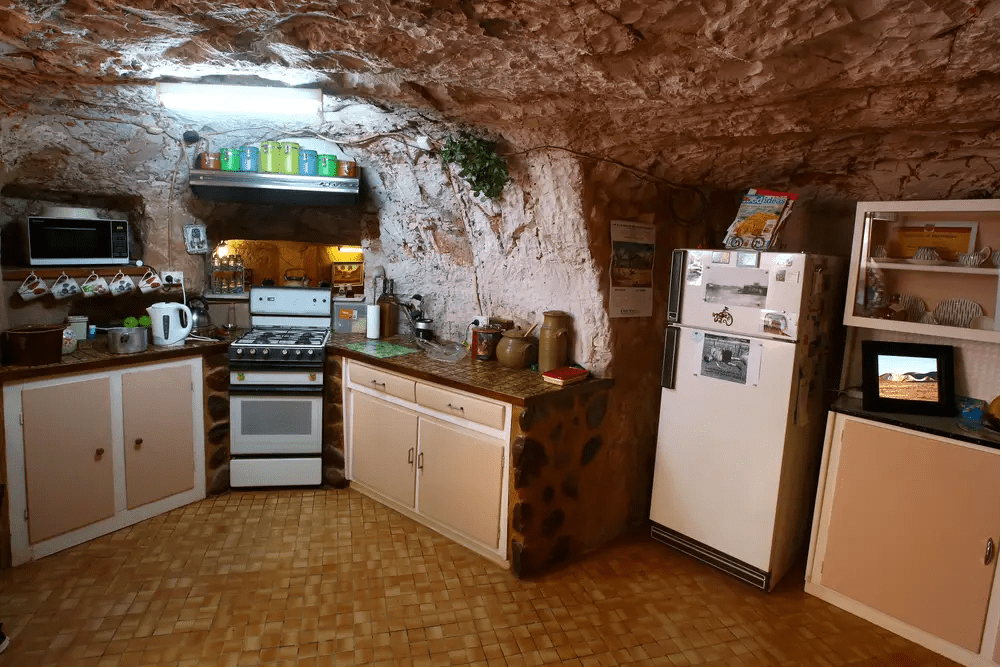The Subterranean Town of Coober Pedy: A Look Inside Australia’s Underground Dwellings

Deep in the blistering Australian Outback lies the scorching mining town of Coober Pedy. With summer temperatures soaring well above 100°F, the hardy residents have found a unique way to beat the heat – by moving underground. Nearly two-thirds of the population in this remote desert settlement reside in “dugouts,” houses carved into the rock beneath the surface.
Located in South Australia about 846 kilometers north of Adelaide, Coober Pedy was founded in 1915 after a 14-year-old boy named Willie Hutchinson discovered opals in the area. Opal mining drew prospectors and soon a community emerged in the harsh desert landscape. With daytime highs of 120°F in the shade, living above ground proved unbearable.

The local Aboriginal people had long taken shelter in caves and holes within the desolate terrain. Early European settlers took note and began excavating their own underground hollows for respite. They soon realized that subsurface hollows also maintained cooler temperatures, providing a comfortable environment year-round.
And so an underground town began taking shape with dugouts, mines, and tunnels carved into the sandstone and bedrock. Some residences connect to maze-like complexes of adjoining rooms sprawling beneath entire streets and districts. Homes sport hollowed out lounge rooms, bedrooms, and kitchens often illuminated by daylight streaming through cracks and skylights.

Today, around 60% of Coober Pedy’s population of under 2,000 live in these dugouts. Some reside in remnants of old mines, known as “rabbit warrens” for their twisty passages. There’s even a subterranean church, which offers cooler wedding venues in the scorching Outback.
Read More: About Coober Pedy, ‘The Opal Capital of the World’
Beyond shelter from the sun, digging down also protects residents from dust storms and flash floods in the desert climes. And the insulating rock maintains relatively stable temps between 77-81°F underground. Rooms stay toasty in winter yet pleasantly cool in summer’s fiery heat.

The singular scenery of Coober Pedy has made it a tourism hotspot, attracting over 200,000 visitors yearly. Tourists flock to the ominous “Breakaways Reserve,” littered with ruins of settlers who didn’t fare so well against the extremes. Hollywood has also utilized the alien-like landscapes for films like Mad Max and Priscilla, Queen of the Desert.
For residents, coping with isolation and accessibility challenges is the tradeoff for their cool subterranean abodes. Prices for dugouts have skyrocketed as demand rises among miners still flocking to Coober Pedy to try their hand at striking opal. Water remains extremely scarce, forcing reliance on costly desalination. And the nearest hospitals and big supermarkets are a 5+ hour drive away.

Coober Pedy is an opal mining town located in the harsh Outback of South Australia, some 850 kilometres north of Adelaide and 680 kilometres south of Alice Springs. It’s a cosmopolitan town with a population of 2,500 and over 45 different nationalities. Coober Pedy is recognised as the largest producer of opal in the world with an estimated 70% of the world’s precious opal being mined in the opal fields of the area.

The town is built in one of the hottest and most inhospitable climates in Australia – a landscape almost devoid of trees and vegetation where summer temperatures regularly reach 47 degrees. The climate is so hot; many people live in below-ground residences called “dugouts”, which are built in this fashion to escape the oppressive summer heat.
While not for everyone, Coober Pedy’s underground way of life perfectly suites the rugged Outback locale. As a prime example of human resourcefulness and adaptation, the offbeat town has carved out a niche (both literally and figuratively) for itself deep within the Australian bush.




